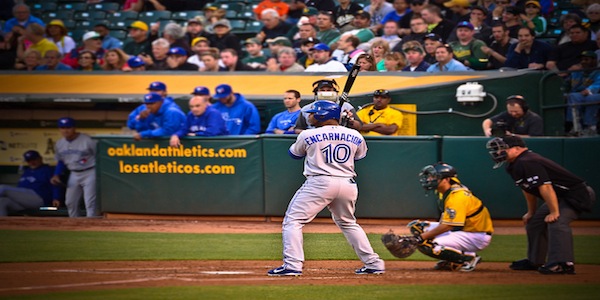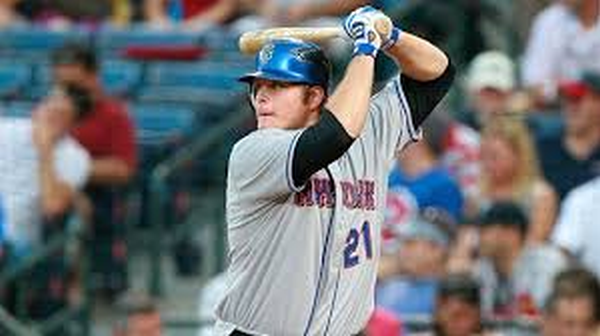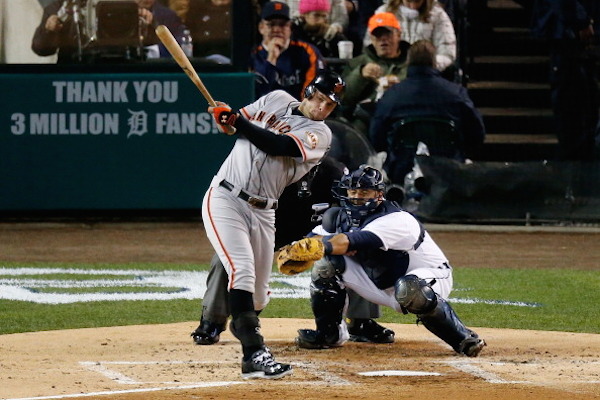2015 Fantasy Baseball: Is Lucas Duda for Real?


Earlier this week I took a look at catchers and how 2015 Steamer projections and early NFBC ADP data compare to how players finished the season ranked last year. I discussed how Devin Mesoraco finished the year as the third most valuable fantasy catcher and was being drafted third at the position but is only ranked as the 13th best catcher per Steamer. I did the same exercise for first basemen and found a case similar to Mesoraco’s just 90 feet down the base path in Lucas Duda. Duda finished 2014 as the tenth most productive fantasy first baseman per Zach Sanders. Early drafters are a bit skeptical but generally think Duda can repeat his breakout as he is being taken 13th among first basemen. But Steamer feels differently about it and has Duda ranked 23rd at the position.
Duda certainly had his own limitations entering 2014, but he also had Ike Davis standing in his way for playing time. With Davis around in 2013, Duda only racked up 384 plate appearances and made 58 of his 92 starts in the outfield. He was brutal defensively in the outfield with a -29.6 UZR/150 in 2013, so he wasn’t going to get the plate appearances to have a shot at real fantasy value with Davis in the picture. But about a week into the season Duda was given the primary 1B job, and about three weeks into the season the Mets traded Davis to Pittsburgh. That led to Davis starting 146 games at first base and coming just shy of 600 plate appearances.
Obviously a 55% boost in plate appearances was going to help his fantasy value, but Duda also had to produce at a level higher than what he’d done in years prior to crack the top 10 at his position. And produce at a higher level he did. Duda’s offensive production last year was 36% better than average, which is actually a rate he hit way back in 2011 in his first full season as a semi-regular. But Duda achieved that level of offensive production in two very different ways. In 2011 he did it by making frequent contact so as not to strikeout too much and to hit for a good average with a little power thrown in. That year he hit .292 with 10 home runs and a strikeout rate of 16.4% in 347 PA. But last year he hit .253 with 30 home runs and a strikeout rate of 22.7% in 596 PA.
I hate to speculate on what a player’s mindset is, but it seems to me like the difference in the type of hitter Duda was and the type of hitter he is now was a conscious decision on his part. For one thing, you rarely see a player come in to the league with a very respectable 16.4% strikeout rate in his first full season and then see him strikeout 24.8% of the time the next three seasons. Usually it’s the other way around. Unless of course the hitter de-emphasized making frequent contact in order to make gains in another area. Which, by the way, is exactly what Devin Mesoraco did last year, so maybe these two are more alike than I realized.
Assuming my assumption about Duda consciously trying to hit for more power at the expense of contact is correct, let me make a few more assumptions. It would appear that his first attempt to do this came in 2012 when his strikeout rate rose 10% from the year prior. The problem is that his ISO dropped significantly. Possibly realizing he had to try something else, Duda started making an effort to hit more balls in the air in 2013 with his fly ball rate going from around 43% to 48.4%. That helped his ISO get back to where it was in 2011, but in my theory Duda was trying to hit for more power than he did in 2011 and so far he only had more strikeouts and fewer hits to show for his efforts. Then he made one additional change last year. He got more aggressive. In 2012 and 2013 Duda swung at a much lower rate than he did when he made frequent contact. But last year he trended back toward his old swing rate and voila! His ISO skyrocketed and he even made contact at a much higher rate cutting his strikeout rate down to 22%.
I’m giving Duda a lot of credit here. I’m talking like his unexpected success in effectively his fourth season was primarily due to a conscious change in approach. Unexpected breakouts like his usually seem to be the result of luck. But usually we don’t see noticeable changes in stats that are somewhat within a player’s control that line up with the narrative of a conscious decision. And I see no signs that luck drove Duda’s breakout. His BABIP was on the low end of the “normal” .270-.310 range. His home run per fly ball rate was the highest of his career, but that’s explained by the fact that his average fly ball and home run distance jumped from 284 feet to 297 feet. That’s the difference between 122nd in the league in that stat and 22nd. It sort of feels like Duda just finally figured out how to get where he’s been trying to go.
When I wrote about Mesoraco I came down definitively on the side of Steamer expecting Mesoraco to regress. Generally I’ll align with the projection systems because they’re smarter than we are. Or at least they’re not as susceptible to recency bias as we are. But so far, I feel myself lining up with the drafters. The regression Steamer expects is to both Duda’s power and his strikeout rate/batting average. The projection system is obviously taking into account what happened prior to 2014 and expecting Duda to go back to the same level of power and to see his strikeout rate tick back up a bit. Steamer is expecting him to get around 600 plate appearances again but projects him for just 24 home runs and a .234 average,. But I think Steamer is missing one thing.
I don’t think Steamer is taking into account how exactly Duda’s plate appearances have been split up against right and left handed pitching the last few years. I can’t believe I’m 1,000 words into this and haven’t mentioned Duda’s platoon split yet, but it’s extreme. For his career he has been 38% above average against right-handed pitching and 25% below average against left-handed pitching. Last year that gap was even more pronounced. And last year almost all of Duda’s extra plate appearances were against right-handed pitching. He had just 15 more PA against lefties but almost 200 more PA against righties. Because Davis also hit from the left side, the Mets couldn’t put Duda in as often with the platoon advantage. But last year, with Davis out of town, Eric Campbell and Josh Satin started a handful of games at first against lefties and thus all of Duda’s extra work came with the platoon advantage.
I get the feeling Steamer doesn’t know that. Because if Duda had gotten the extra 200 or so PA last year and 50 of them had been against lefties as opposed to just 15, Duda wouldn’t have improved as much as he did. I’m making another assumption here, but I just have to assume Steamer doesn’t bake in the info of how many plate appearances were with and without the platoon advantage. Because Duda absolutely destroyed right-handed pitching last year, and there doesn’t appear to be anything fluky or lucky about his performance against them. If the Mets started playing him regularly against lefties as well, it would hurt his rate stats. But as long as Duda gets 450+ PA against right-handed pitching, I’m on board with him as low-end starting first baseman and top-end corner infielder in mixed leagues.





